Test Drive of the Latest Porsche 911 GT3: Why the 992.2 Is the Democratized GT3
公開日:2025.10.31

コンテンツ
Meeting the Latest GT3 Wrapped in Cartagena Yellow
The car parked in the Porsche Center’s lot immediately commanded attention.
This is the 992.2 GT3, the facelifted version of the 992 generation. Its body color is Cartagena Yellow, a unique shade blending mustard with a hint of pale green. Honestly, when I first saw it in the showroom, it didn’t move me much. But combined with the GT3’s large rear wing, the impression completely changed.
The complex tone—mustard-like yet not just yellow—harmonizes surprisingly well with the aggressive GT3 silhouette. Unlike classic white or black, this color is definitely polarizing. Still, it perfectly suits this GT3 package.
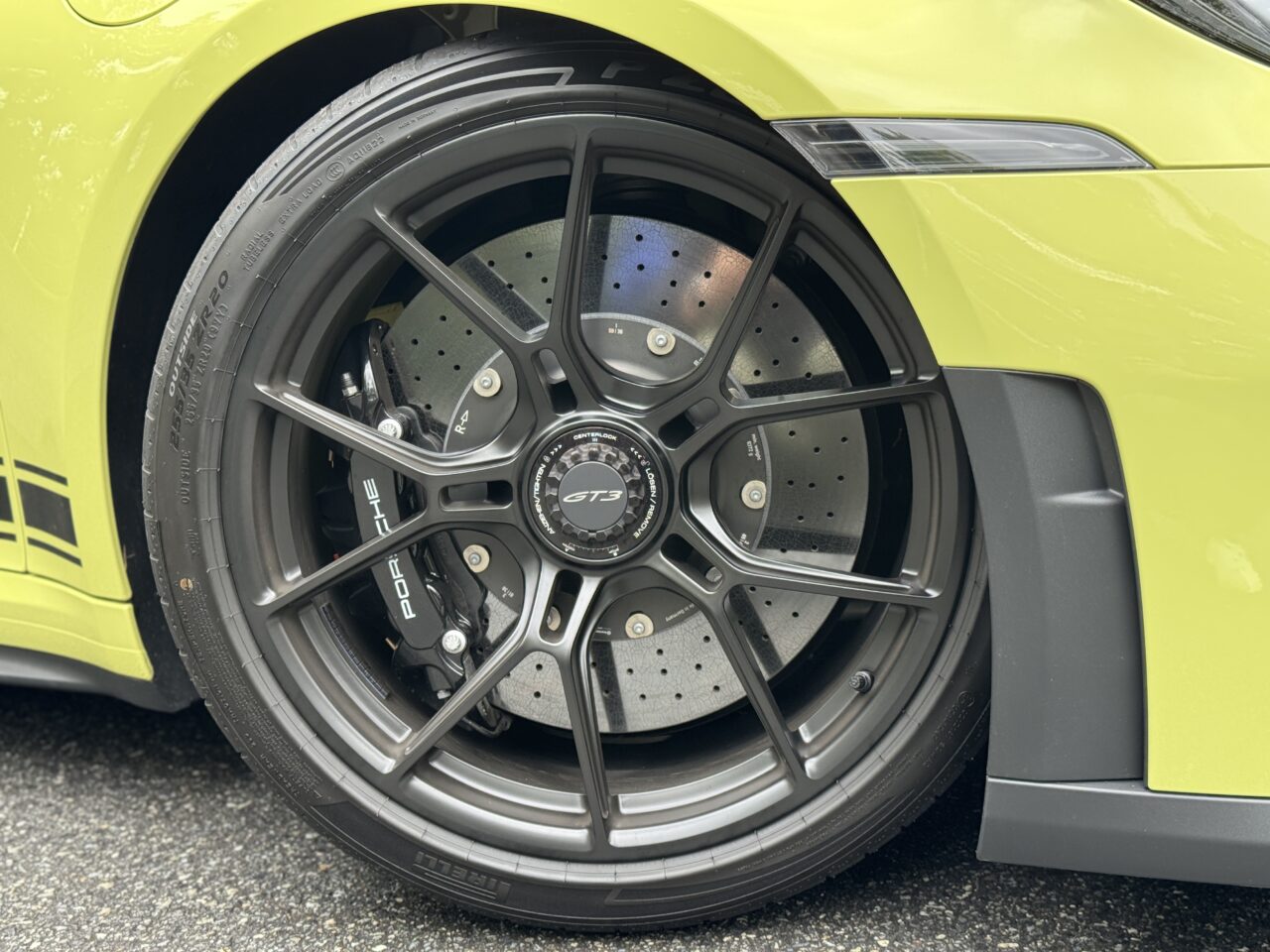
Looking down at the wheels, the car is equipped with black-painted PCCB (Porsche Ceramic Composite Brakes). Recently, there’s been a trend to opt for subtle black calipers rather than the traditional yellow ones to quietly signal high performance. This car follows that trend perfectly.
With only about 500–600 kilometers on the odometer, it’s practically brand new. Thanks to the owner’s generosity, I had the rare opportunity to take this exceptional GT3 for a test drive. Anticipation was building even before starting the engine.
Engine Start and First Impressions: The Evolution of a Usable GT3
Pressing the start button awakens the engine.
The owner mentioned, “I switched from a GT4 RS, and it’s noticeably quieter.” Indeed, compared to previous GT3s, the volume is toned down. But keep in mind, this is relative to GT3 standards. Compared to regular cars, it still produces plenty of commanding sound.
Revving the throttle confirms the unmistakable GT3 roar. The volume might be dialed back by 10–20%, but it still boasts the proud sound quality and presence worthy of a 911 GT3. More notable than the volume reduction is the change in sound quality.
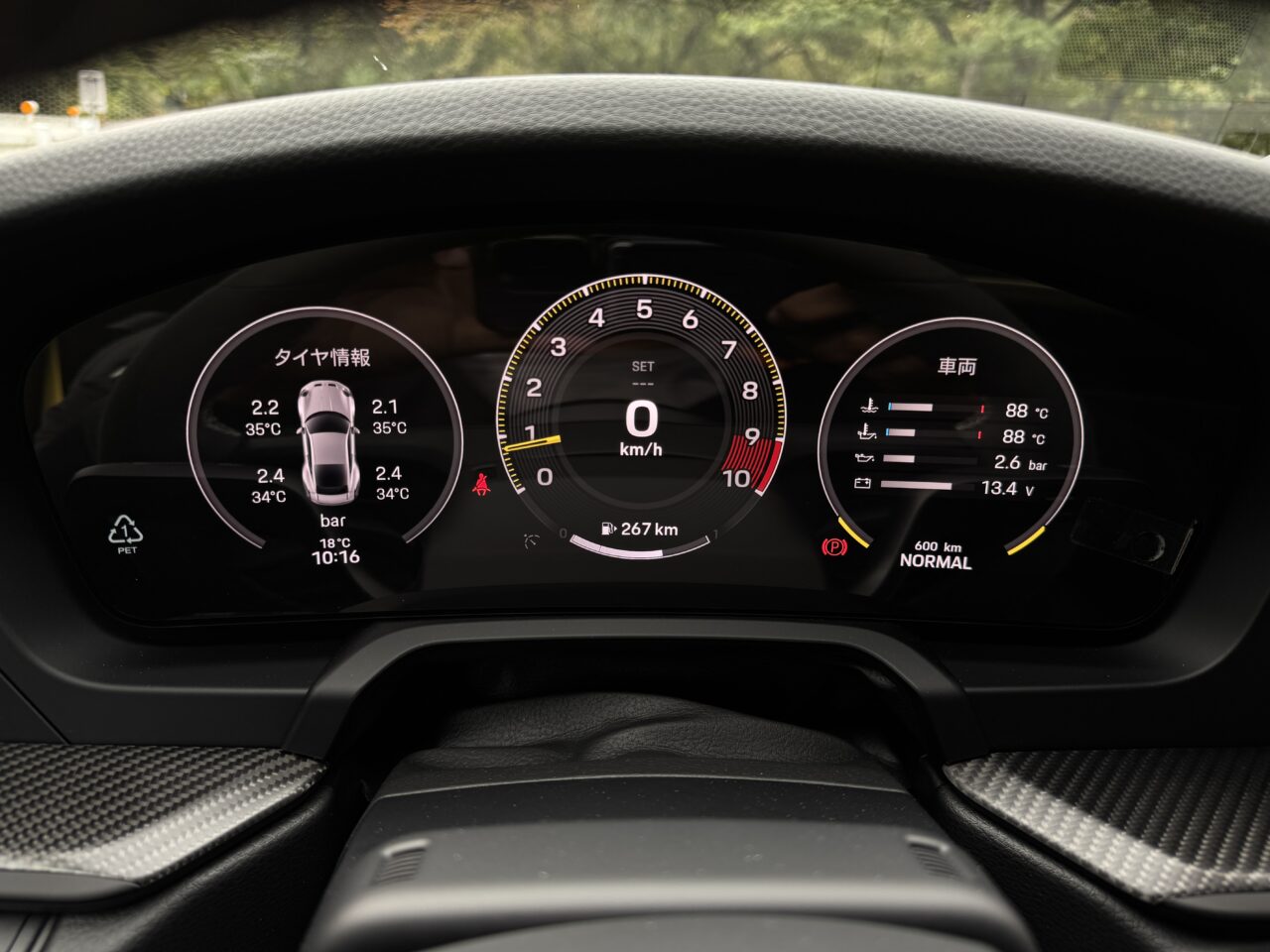
This particular model features a 6-speed manual transmission.
Manual GT3s are rare, but the light clutch surprised me. While not as feather-light as the 718 Cayman GTS 4.0, it’s noticeably easier than manuals from the 981 or 991 generations. It’s far more manageable than the 991 GT3 Touring I once owned.
The shift feel is excellent—no catchiness, just smooth gear engagement anyone can master. The clutch connection is natural, with no jerks when starting off. The 991 GT3 Touring used to have a somewhat abrupt shift from 1st to 2nd gear for newcomers, but the 992.2 has completely eliminated that finickiness.
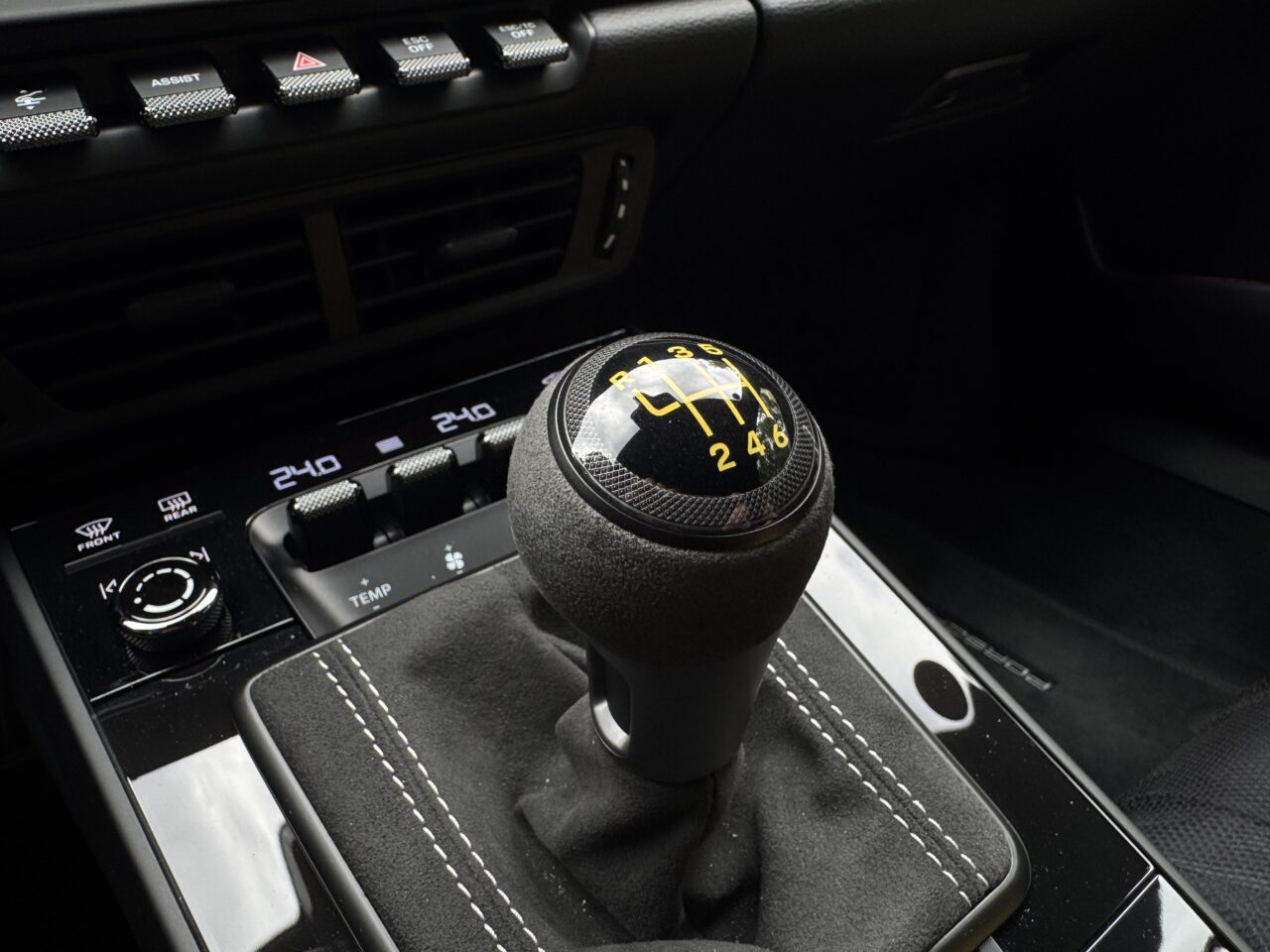
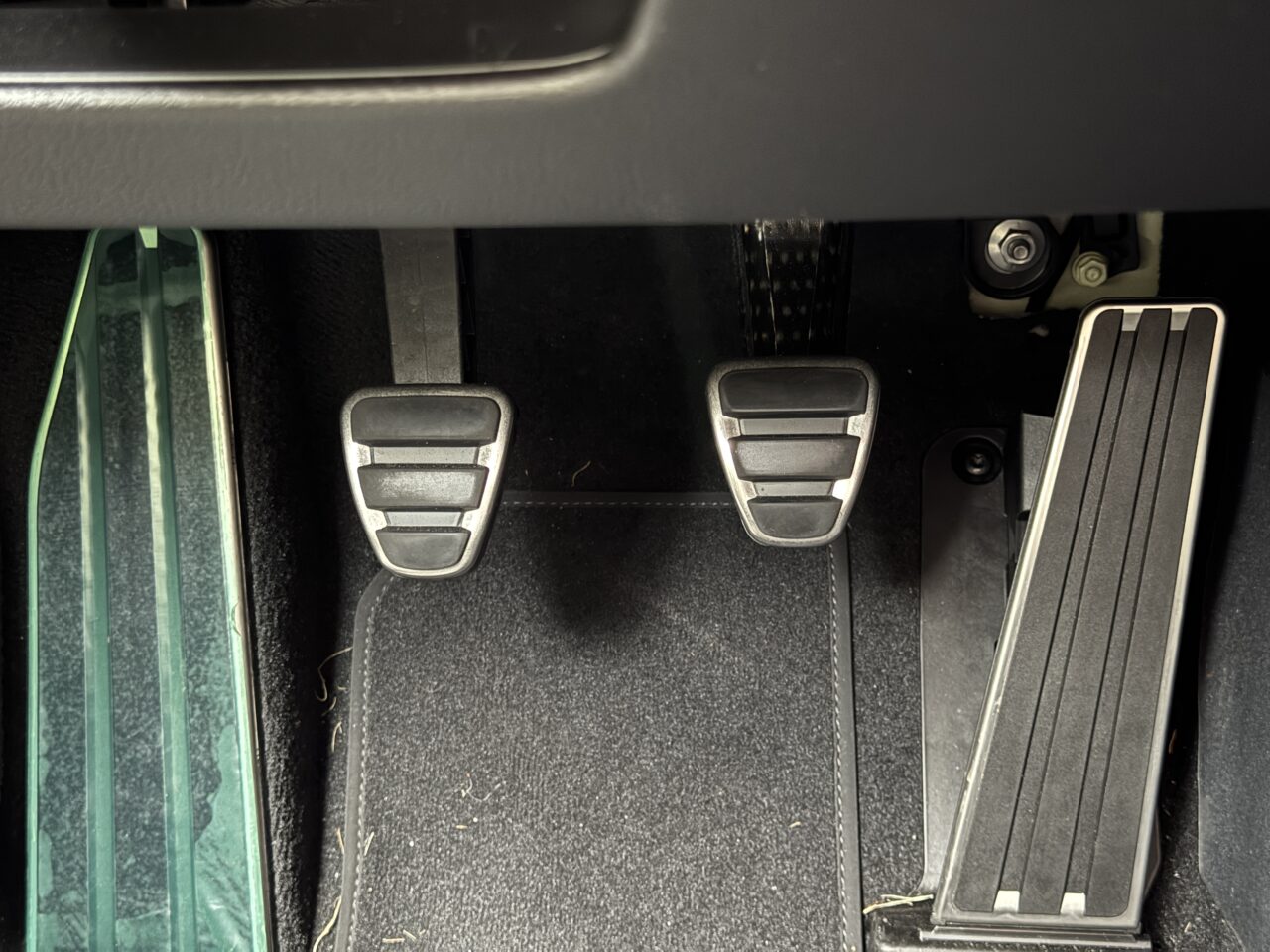
Right from the start, the ride comfort stands out. The suspension doesn’t feel harsh; instead, it moves gracefully and grips the road with finesse. Since it’s still a new car with only 500–600 km, there’s a slight break-in feel that will smooth out after 2,000 or 3,000 km.
This ride quality closely resembles the 718 Spyder RS, which Porsche officially tuned for comfort on public roads. The street comfort here is a clear departure from previous GT3s.
Optimized Gear Ratios Deliver the Joy of Revving
Once on the mountain roads, the GT3’s true character emerges.
Shifting from 2nd to 3rd and 3rd to 4th, you can use a classic GT3 technique: blipping the throttle while disengaging the clutch to shift smoothly. With auto-blip on, downshifts are perfectly matched, almost like a PDK dual-clutch transmission. You can seamlessly drop from 4th to 3rd or 3rd to 2nd gear.
This technique feels incredibly satisfying. What’s more, the gear ratios are noticeably different from previous GT3s. The 992.2’s ratios are about 8% shorter than the earlier 992.1 model.

Previously, driving a GT3 on roads like the Royu Driveway meant staying almost exclusively in 2nd gear—more about revving the engine in a fixed gear than enjoying gear changes. But with the 992.2, you can actively switch between 2nd and 3rd gears, enjoying the shifts as you go.
The shorter gear ratios make it easier to keep the engine spinning without jumping to crazy speeds. It’s still fast, of course, but this is arguably the first GT3 that lets you comfortably rev the engine on Japan’s winding mountain roads. This is a major evolution.
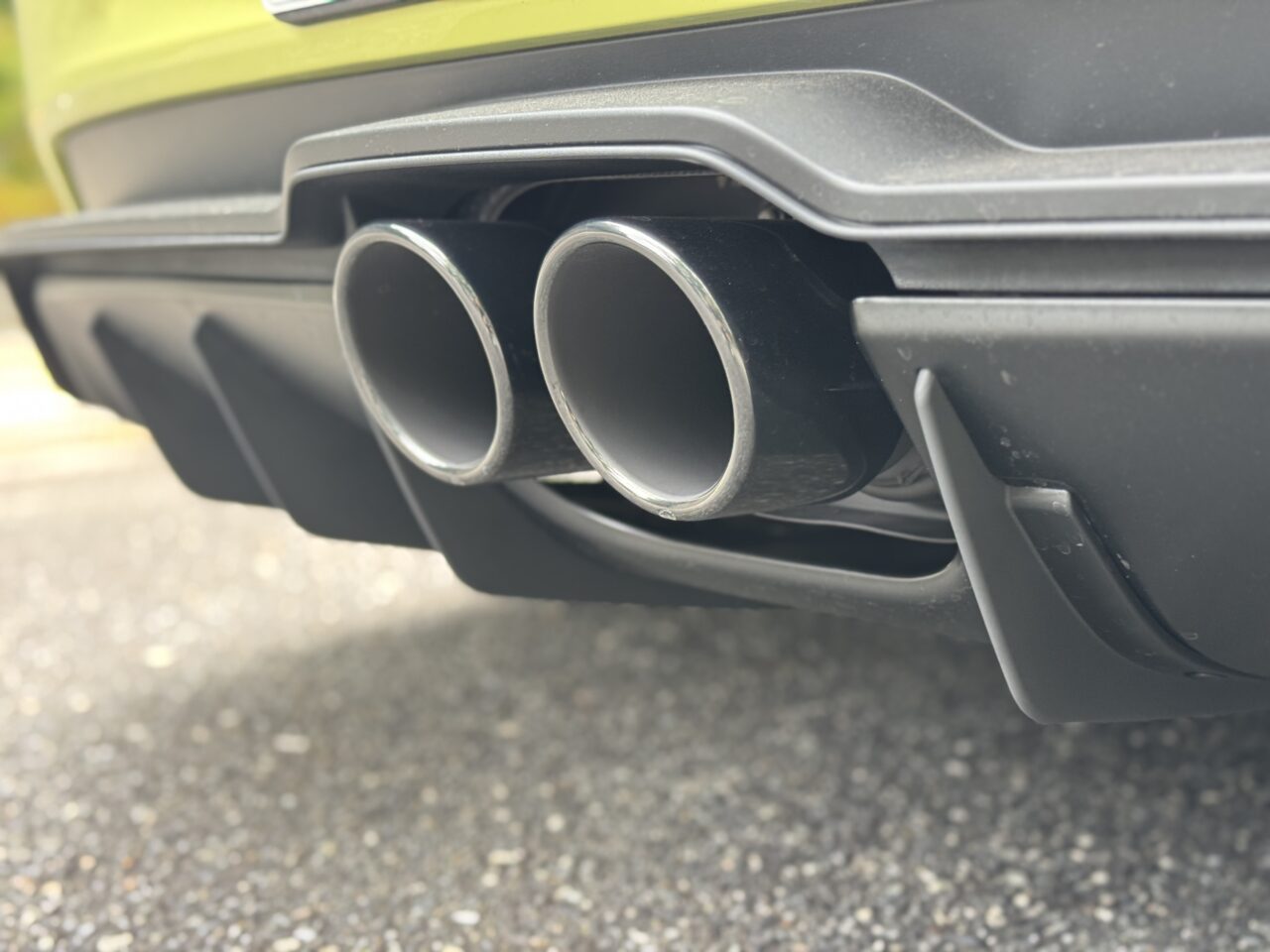
The sound quality has also improved.
Older GT3s had mechanical noise dominating at low RPMs, with the iconic GT3 howl only audible at high revs. Driving between 2,000 and 4,000 RPM on public roads was often frustrating. The 992.2 narrows the gap between low and high RPM sound quality.
Though quieter, unwanted noises are filtered out, and exhaust tones are more prominent. The result is a richer sound experience. Even at 2,000 or 3,000 RPM, the exhaust note feels like a pleasant soundtrack. This is something previous GT3s couldn’t offer. Combined with the improved ride comfort, it makes you want to keep driving. I’m convinced this is a GT3 you can use every day.
Handling and Suspension: A Balance Tilted Toward Neutral
Braking performance is, of course, impeccable.
The PCCB brakes provide absolute stopping power, allowing confident deceleration from any speed. The biggest change is in handling. When I drove the earlier 992.1 GT3, I was amazed by the double-wishbone front suspension’s grip. The front end aggressively grabbed the road, with the nose eagerly diving into corners. It wasn’t quite oversteer, but the front felt very sharp.
The 992.2 is less extreme. It leans closer to neutral balance. It’s not understeery, but the front doesn’t bite as aggressively as before. It’s more like the balanced feel of the 991 GT3.
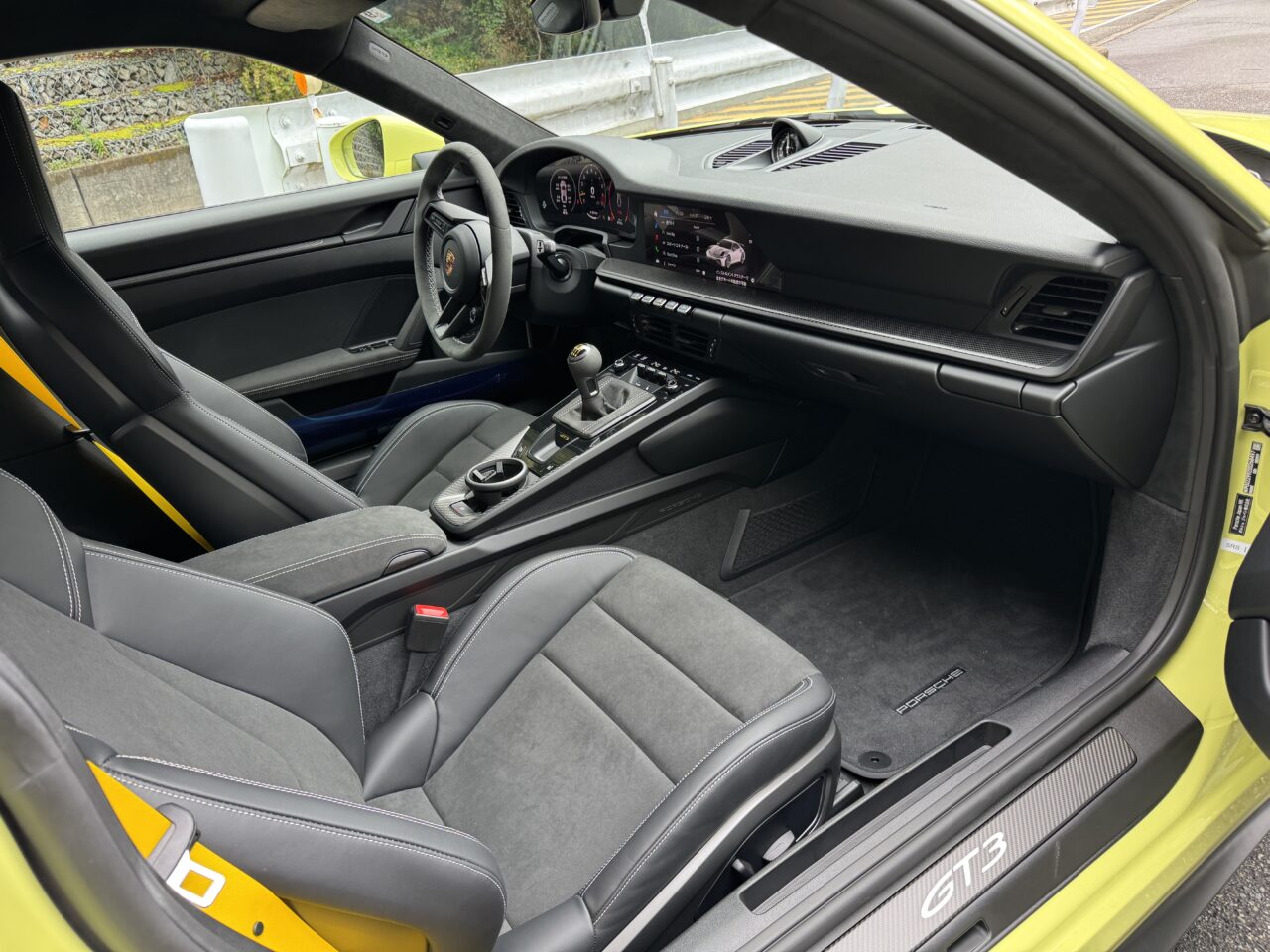
This change improves drivability. With better ride comfort and a milder character, it’s a GT3 that even beginners can handle. Compared to my 718 Spyder RS, the GT3 still feels stiffer and sharper in corners. The Spyder RS is excellent, but the GT3 is a step above.
However, if you’re seeking the hardcore, track-focused sharpness of the 997 GT3, this 992.2 might feel a bit soft.
I haven’t pushed the engine to high revs yet due to break-in.
But judging from the low- and mid-range response, this is unquestionably a genuine GT3 engine. Some say the addition of the GPF filter reduced torque, but I didn’t notice any difference. This is the real deal, and few would complain.
After some time driving, I realized this feeling reminded me of the 992.1 Carrera T. The Carrera T’s sporty, nimble, and fun-to-drive nature, refined and equipped with a GT3 engine. If a “Carrera T GTS” grade existed, this 992.2 GT3 would be it.
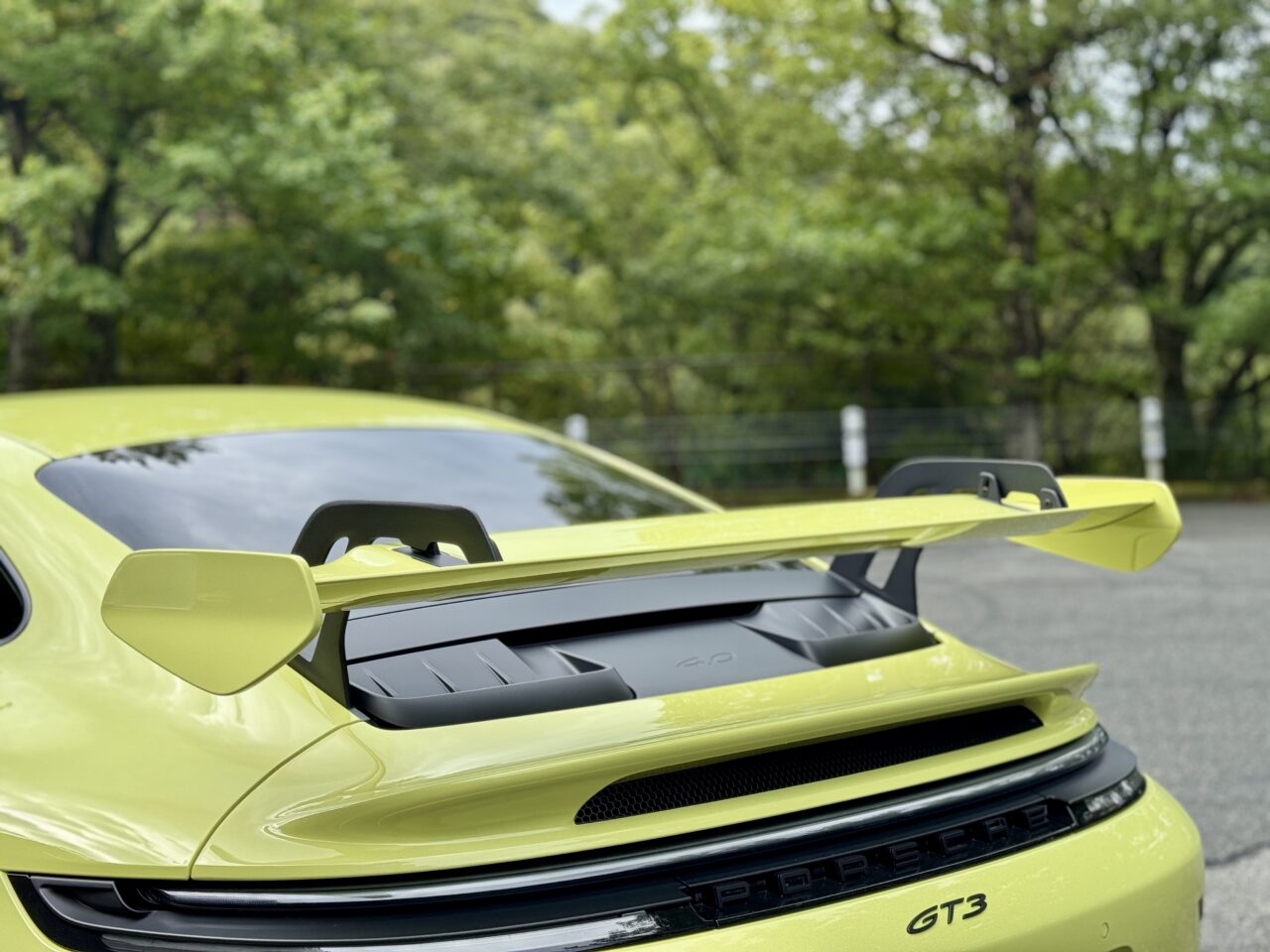
The Democratized GT3 Points to a New Direction
When the 718 Spyder RS debuted, I called it the “democratization of the GT3.”
Short gear ratios let you enjoy the engine’s sweet spot on public roads. The suspension is tuned for street use, making daily driving feasible. The Spyder RS with a GT3 engine lets more people experience the GT3’s appeal.
But the 992.2 GT3 might be the true “democratized GT3.” Unlike the Spyder RS’s open-top uniqueness, this is a proper coupe GT3 that greatly improves everyday usability.
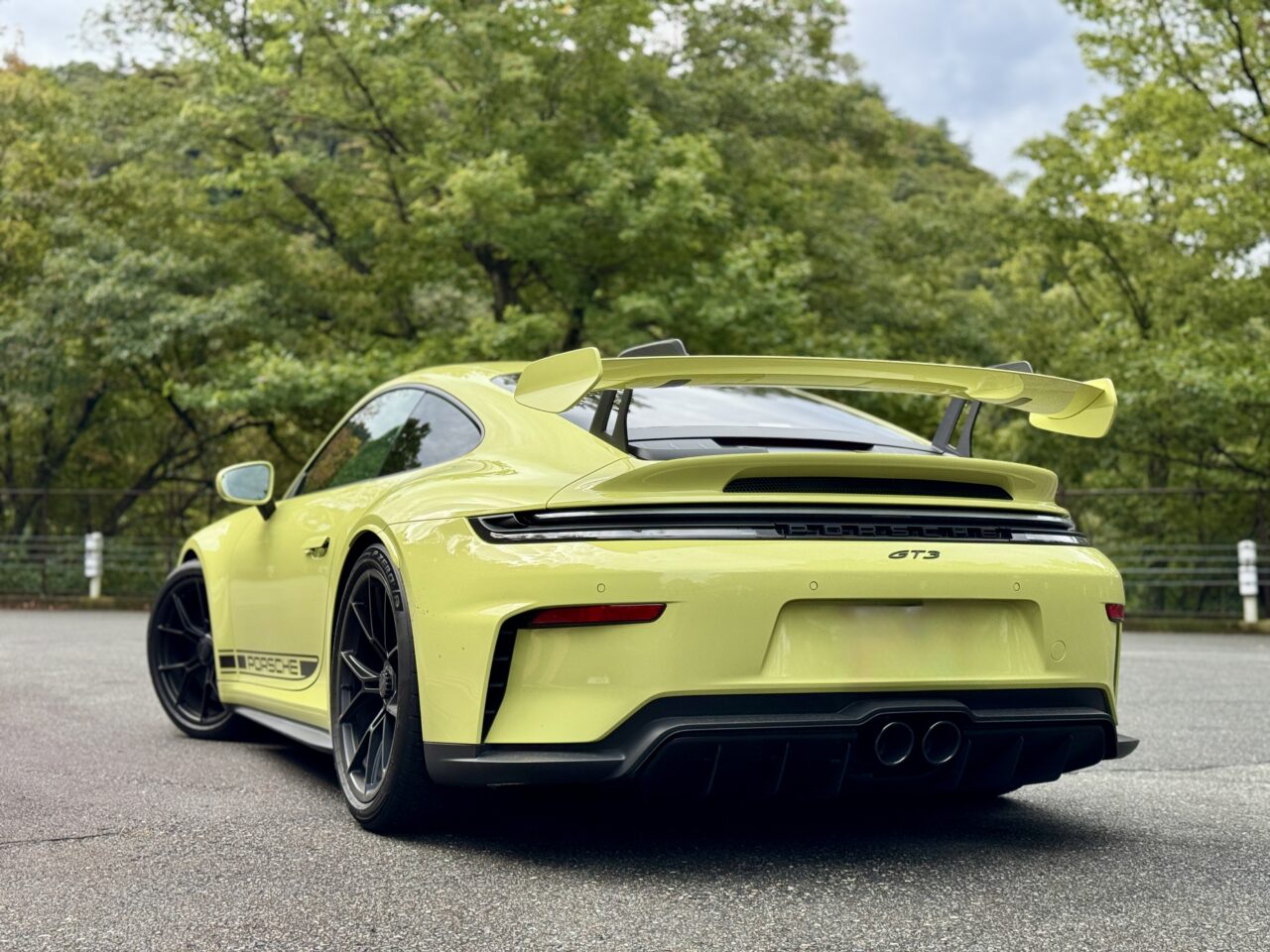
This car suits those who want to hit the track occasionally, enjoy spirited weekend drives on mountain roads, and crave the 9,000 RPM-revving GT3 engine—not just a regular Carrera. If you like the 992.1 Carrera T’s driving feel, this GT3 is a worthy upgrade.
Conversely, if you want hardcore track days or aggressive mountain runs, waiting for the upcoming RS model might be better. The 992.2 GT3 is fast on track but tuned more for street comfort.
The GT3 name often carries a hardcore image.
Yet this car breaks that stereotype. It’s a GT3 you can drive daily with comfort. A GT3 that lets you enjoy revving the engine on public roads. A GT3 that even beginners can handle.
It combines the lightness and usability of a Carrera T with the GT3 engine and handling. This isn’t a contradiction—it’s a new possibility. Porsche’s goal seems to be a world where more people can enjoy the GT3. In that sense, the 992.2 GT3 is a major success. When returning the car after the test drive, I genuinely wished I could keep driving. That feeling says it all about this car’s charm.
このブログが気に入ったらフォローしてね!


Comment ( 0 )
Trackbacks are closed.
No comments yet.